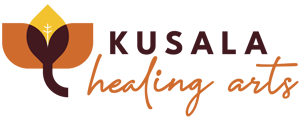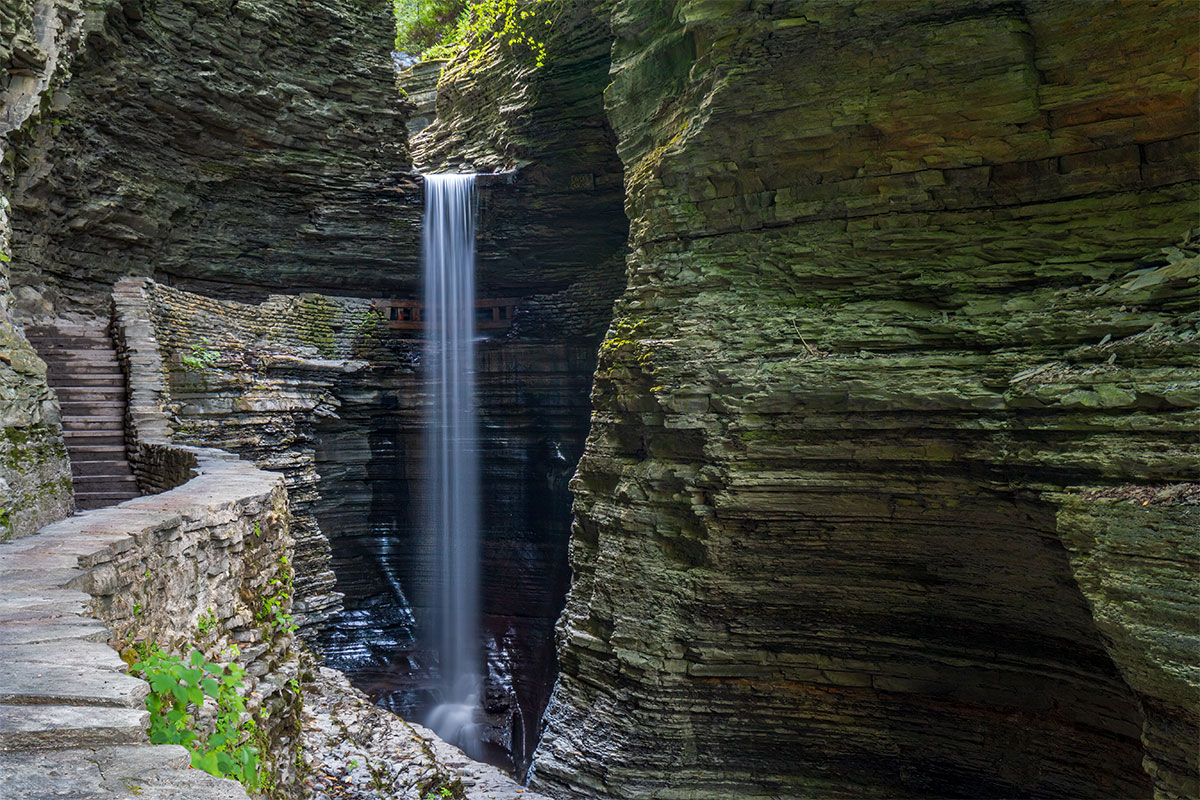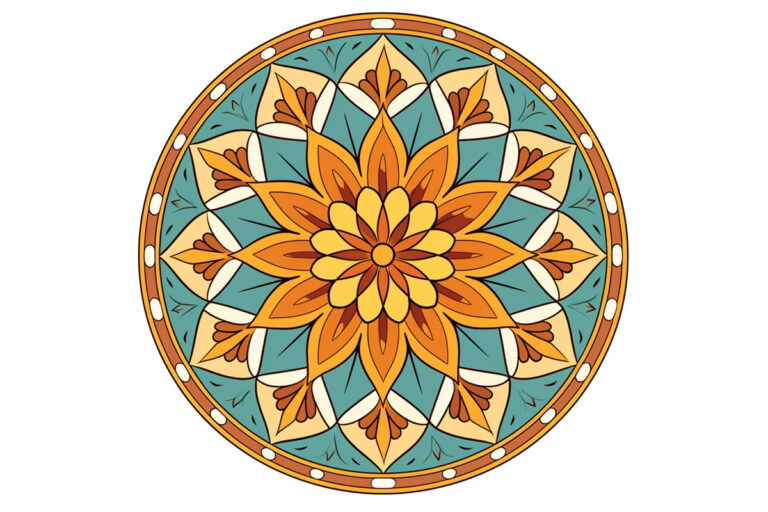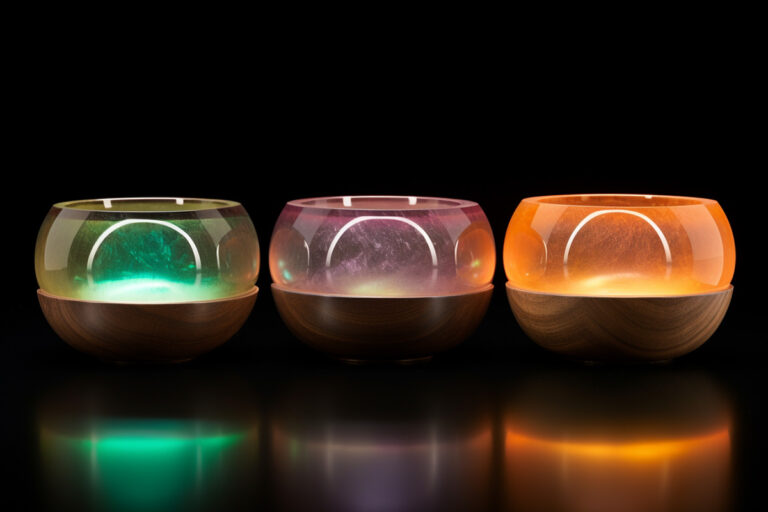What Are The Healing Arts?
Reestablishing
Kusala Integrative Medicine
Over the last few years since I re-established Kusala Alternative Healthcare, now known as Kusala Integrative Medicine, doing business as Kusala Healing Arts, the practice and discipline of writing have continued to elude me. The act of sharing more of myself online is something I’ve continually put off, hoping that someone else would eventually do it for me.
A Long-Awaited Visit to
the Corning Museum of Glass
Well, no more. As I approached the end of my third year in acupuncture school — and ostensibly, the completion of my higher education — I decided to make a trip up north to finally visit the Corning Museum of Glass in Corning, New York. As a young glass major in Kent State University’s Fine Arts program, I knew that Corning was a place to visit as a glass artist. However, it always seemed like a distant destination just out of reach.
Glassblowing, School, and Early Relationships
At the time, my life, much like it is now, revolved around work, school, late nights in the studio making glass or helping others make glass. The little downtime I had was spent with a college sweetheart, a relationship that later became more serious.
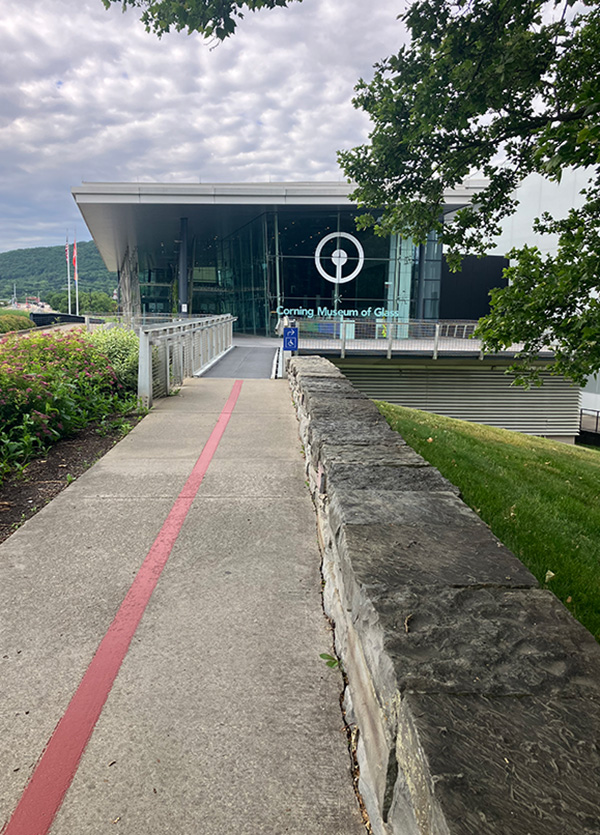
Corning, New York
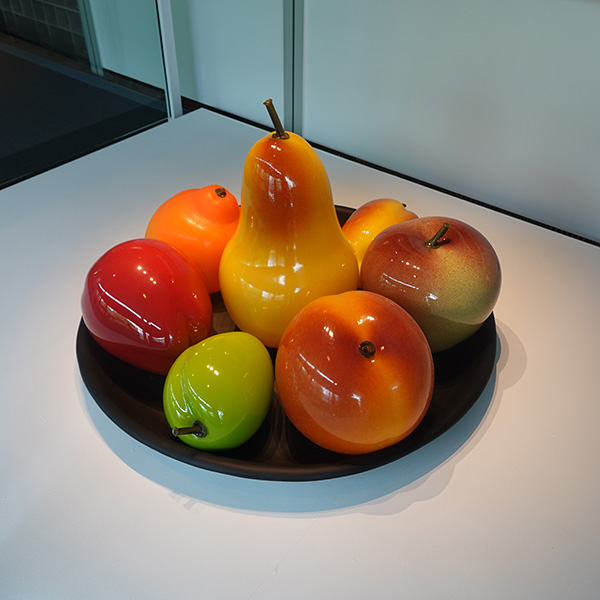
Flora C. Mace and Joey Kirkpatrick
H: 91.8 cm, W: 126.7 cm, D: 22.9 cm
2000
Transitioning from Art to Healing
Unconvinced that a BFA would suit my undecided collegiate endeavors, and having already been introduced to the healing arts by a circle of healers known as The Circle of Living Spirit, I decided early in my junior year that it would be best to continue on the path of becoming a healer. To add credibility to this unknown practice, I knew I needed a license to offer these services to the public.
Reflections on Glassblowing
In short, I left my undergraduate studies to become a licensed massage therapist. After relocating to Columbus, Ohio, in August 2001, I continued working in glass from Glass Axis, a public access glass studio, until 2004 or early 2005. I have to be honest with myself as a glass artist, though — I don’t want to give the impression that my glassblowing skills were on par with those of a maestro, a large-scale Venetian-style glassblower, or even a well-versed hot glass sculptor from the West Coast.
Rather, I was an intermediate glassblower who had already experienced a creative and spiritual awakening while on active duty in the Marine Corps. I found myself being called in a certain direction for reasons I couldn’t quite explain — even to those I loved the most.
Corning, New York
the Corning Museum of Glass
Jung Tao School of Classical Chinese Medicine
At the Jung Tao School of Classical Chinese Medicine, our classes are structured to include three years of didactic learning, followed by one year — the final year — of clinical work in Jung Tao’s student clinic. This structure is appealing for many reasons. It allows adult students like myself a more flexible schedule to continue working full-time, or nearly full-time. Additionally, by the end of the third year, we are nearly finished with theory, lectures, classwork, and the regular dose of homework one might expect.
Celebrating Milestones and Completing a Chapter
So, to celebrate, I spent a few days camping and touring galleries in, of all places, Corning, New York.
In my mind, I did it. I finally finished school. And while I still had a few final exams to manage, a whole year of clinical work to complete, and three separate board exams to pass before I could offer acupuncture services to the public, a significant portion of why I left Kent State in the first place was now finally complete.
A moment of completion after 20+ years of “What if?”
What if I had stayed at Kent State and finished my degree — where would I be? Would the Bachelor of Fine Arts have paid off, and at what level of commitment would I have found myself working as a glassblower or sculptor?
These questions lingered throughout the years. As a young Marine, I had learned the importance of finishing what I started, and this incomplete bachelor’s degree bothered me for a long time.
Navigating Life’s Doubts and Uncertainties
And although my soul’s higher purpose and the spiritual arc of my life have been fulfilled during those intervening years — something I’ll be sure to explore through writing, filming, creating, and seeing patients — it hasn’t been without moments of doubt, where I often find myself being pulled in multiple directions. It’s at times like these that I remind myself of Daido Roshi’s kind words on realizing the self and attaining enlightenment: “. . . great faith, great doubt, and great determination” are required to accomplish the Buddha Way.
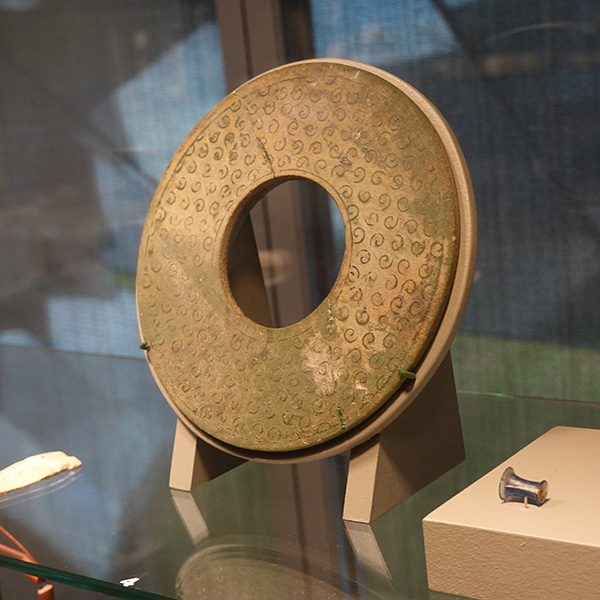
China, Han Dynasty, 206 BC – AD 220
D: 16.4 cm
For more information on this object, please visit the glass collection at the Corning Museum of Glass.
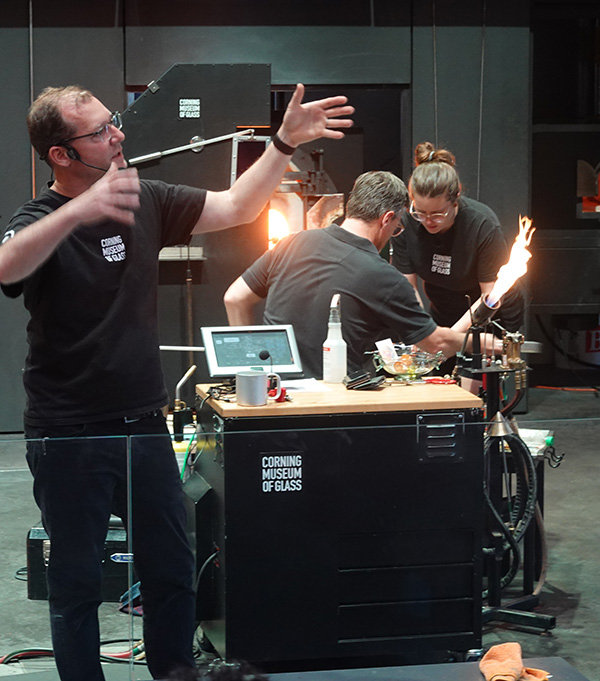
the Amphitheater Hot Shop
Blown Away and
the Corning Museum of Glass
The Inspiration Behind Netflix’s Blown Away
This trip to Corning had been in the works longer than the Netflix series Blown Away has been on the air, although watching Blown Away has been an interesting experience for me. First of all, as a glassblower, I love seeing what others are making and how they’re making it. Secondly, like many others in the audience, I had been hoping for years that a competition-style glassblowing reality TV show would come on the air. After the bake-offs, cutlery shows, Lego competitions, weight loss shows, dancing shows, dating competitions, and all the other reality competition shows — where was the glassblowing show?
Challenges of a Glassblowing Reality TV Show
One of the challenges, I think, was figuring out who would bring this idea to Netflix. Let’s face it, glassblowing requires some pretty specific equipment. Then, who has the technical expertise and glassmaking proficiency to adequately judge this type of competition? And, of course, there are the filming aspects of working with glass that would make post-production schedules that much more specific. The finished glass pieces must cool to room temperature overnight at a minimum, and it’s unclear whether the glass artists on Blown Away are given the time to cold work their pieces after completion. This could be another time-consuming aspect of the process that needs to be considered.
Reconnecting With a Key Mentor
One of the reasons I wanted to visit Corning was to reconnect with Eric Meek, a fellow Kent State alum who is currently the Senior Program Manager at the Corning Museum of Glass. As mentioned in the glass section of this website, Eric holds a unique place in my journey because he’s the person who taught me how to work with glass. Although René Culler, another NE Ohio native, was our faculty instructor at the time, Eric’s role as a graduate student and instructor was important to me as a young person learning to work with hot glass. I credit him with shaping my early skills at the bench, and his role as a final judge on the first season of Blown Away further highlights his credibility, skill, and expertise.
Eric and Jeff Mack have been working nearly in tandem since their time as undergraduate students at Bowling Green State University in Bowling Green, Ohio. Although I haven’t worked with Jeff in the same ways I worked with Eric, both have a storied history as seasonal gaffers at Cedar Point amusement park in Sandusky, Ohio, and later at the Henry Ford Museum in Dearborn, Michigan. Given glass’s historical significance as both a functional and decorative material, it’s easy to see how it made its way around the Great Lakes region with railways and the Erie Canal, with stops along the Finger Lakes region of New York State and, lo and behold, Corning, New York.
Needless to say, it’s exciting to see these two at work — not only in their commitment and longevity to the material and their craft but also in their support of the glassblowing community at large.
Abstraction and Gallery Space
The Familiar Atmosphere of Gallery Settings
It has been some time since I’ve been in a gallery setting. Some might say it’s been too long. The quiet beat of footsteps walking behind you, the solemn gaze of the museum guides watching from around the corner, the hesitant peek to see what’s next — all of it felt familiar.
Experiencing Art Without
the Pressure of Consumerism
The Corning Museum of Glass doesn’t disappoint because everything in its collection is made primarily of glass. That’s not to say other materials aren’t present, but the focus is on the study, preservation, and appreciation of glass, along with the creative moments of inspiration that folks like myself aspire to. Plus, nothing in the gallery is for sale. Well, there’s plenty for sale — actually, there’s a lot for sale — but I wasn’t in the gallery space looking to buy anything, so I didn’t feel the harsh winds of consumerism breathing down my neck.
From Glassblowing to
Past Life Traumas and the Healing Arts
For the first time in a long time, I felt my mind open up without the usual reflective tendencies to ruminate. Although this may sound counterintuitive at first, after I let go of glassblowing in 2005, I entered into a massage and bodywork business partnership in Columbus that was mismatched from the beginning. Despite my clear intentions of establishing a fair and equitable partnership, not every aspect of those relationships was compliant or transparent. What could have been a profitable growth opportunity for both parties instead became a journey through a menagerie of past life traumas. My, oh my, how those prophecies came into being.
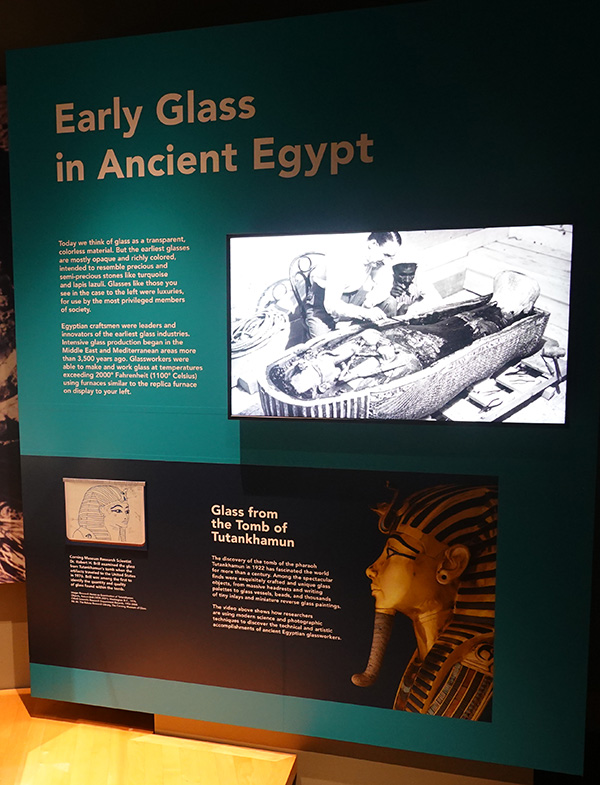
Making Medicine From Medicine Bowls
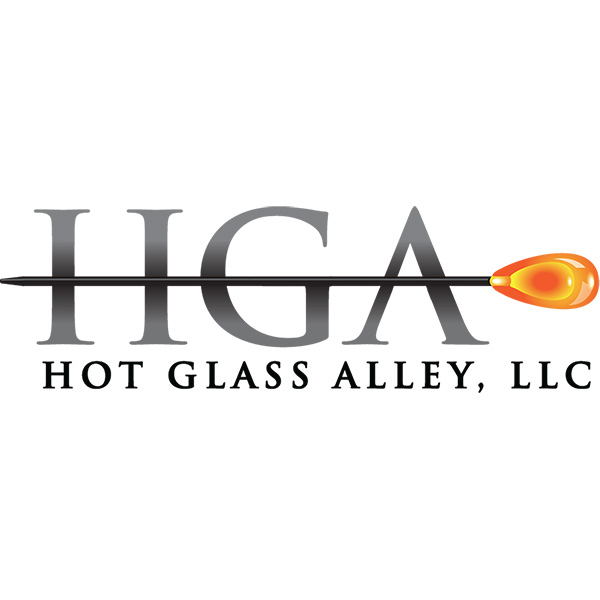
Exploring Body Mechanics in Glassblowing
Coming up next is the beginning of my work in medicine bowls, continuing my trips to the North Carolina Glass Center in Asheville from last year. Although I’m not finished working in that space and look forward to the opening of their new studio in Black Mountain, I’ve finally connected with Jake Pfeifer and his talented team of glassblowers at Hot Glass Alley here in Charlotte.
I’m planning my first visit in the coming days to start an informal video and photo project on body mechanics and musculoskeletal pain management for the glassblowing community. With furnace rental now available on a case-by-case basis, I’m thrilled to have a workspace closer to home. Stay tuned as I work to improve my glassblowing and filmmaking skills, starting with these medicine bowls. After that, I’ll dive into hot glass sculpting, a challenge I’ve eagerly anticipated.
Join me on this journey — follow along to see how these projects unfold!
